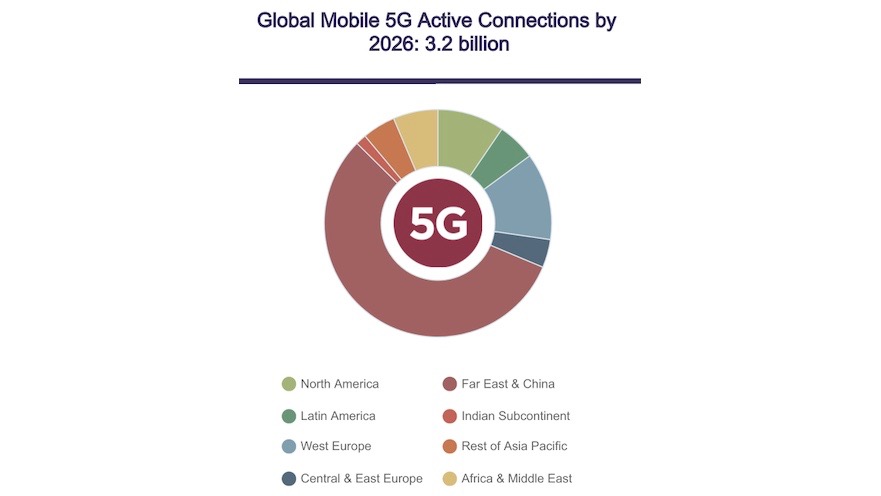New study predicts global 5G connections to reach 3.2 billion by 2026
Juniper Research’s study puts the forecasted 940% growth down to network orchestration tools maximising monetisation.

A new study from Juniper Research has found that the total number of 5G connections will reach 3.2 billion by 2026; rising from 310 million in 2021. To maximise the monetisation of this significant growth in connections, it predicts that operators will accelerate investment into standalone 5G networks to best position their services to manage future capacity. This is due to standalone 5G networks leveraging next-generation technologies, such as network orchestration tools, to enable operators to monetise data‑intensive use cases, like remote healthcare and mobile gaming.
"Tools that can automate the orchestration of the network should be a priority as operators roll out standalone 5G networks."
Sam Barker, Juniper Research.
"As 5G coverage proliferates, the onus is on operators to maximise their return on 5G investment by providing revenue-generating services and minimising operational expenditure. Tools that can automate the orchestration of the network should be a priority as operators roll out standalone 5G networks. This will enable a greater data throughput, which 5G subscribers should benefit from," said Sam Barker, report author and Lead Analyst at Juniper Research.
Value-added 5G Services
Juniper Research’s study, 5G Monetisation: Business Models, Strategic Recommendations & Market Forecasts 2021-2026, identified automating network orchestration tools as a key priority for operators in monetising their 5G services. This is because these tools allow operators to adapt network conditions based on AI analysis of traffic; providing more bandwidth to connections that need it, and maintaining service performance.
Revenue per 5G smartphone to fall
The report predicts that by 2026 the average revenue per each 5G phones connection will fall to $17 globally, from $29 in 2021; significantly impacting operator revenue. To alleviate this decline, it recommends that operators leverage orchestration tools to retain a network’s highest throughput and lowest latency for connections that require it. By utilising this approach, operators can justify charging a premium to these prioritised connections over other 5G connections, and slow this declining average revenue.
Asia Pacific to Account for 2 Billion Connections by 2026
According to the study 60% of global 5G connections will be located in the Asia Pacific region by 2026. Network orchestration technologies, alongside mmWave frequencies that enable data-intensive 5G services, will be a key driver in creating an ecosystem in this region that allows mobile subscribers to leverage 5G networks for emerging mobile services, whilst maintaining network performance.
"Subscribers to explore novel services that require 5G connectivity."
David Bowie, Juniper Research.
“Operators in China, Japan and South Korea have all implemented lower subscription costs, which have accelerated 5G adoption, thus enabling these subscribers to explore novel services that require 5G connectivity,” said report co-author David Bowie.
Get up to speed with 5G, and discover the latest deals, news, and insight!
- Why 5G small cells are vital for mmWave 5G
- Get updates on the hottest 5G stocks
- We reveal the latest 5G use cases
- Discover the truth behind 5G dangers
- 5G towers: everything you need to know
Rachael is a British journalist with 17 years experience in the publishing industry. Since launching www.digitalcameraworld.com, she’s been freelancing, and working for some of the world’s best-loved websites and magazines including T3.com and TechRadar.com and has also had a book, iPad for Photographers, published. A regular contributor at 5Gradar, Rachael is following the 5G market closely. Find out more at www.rachaelsharpe.com

